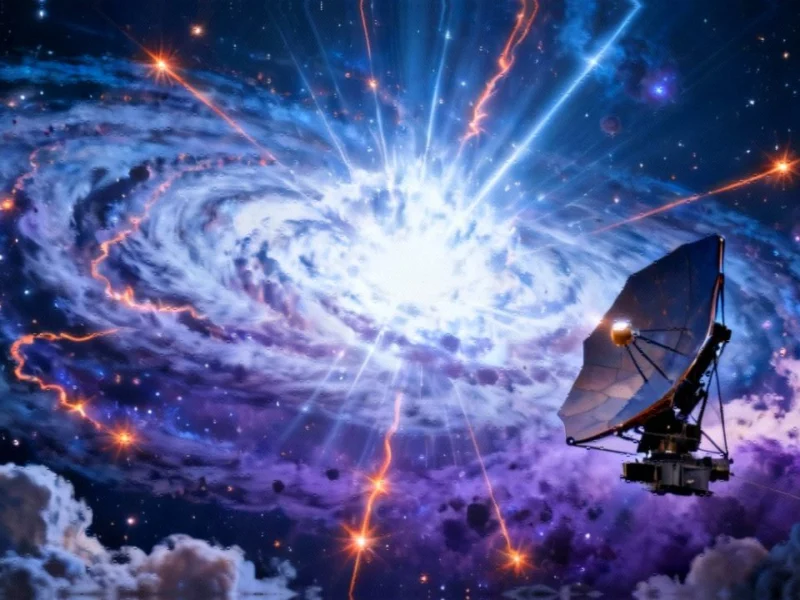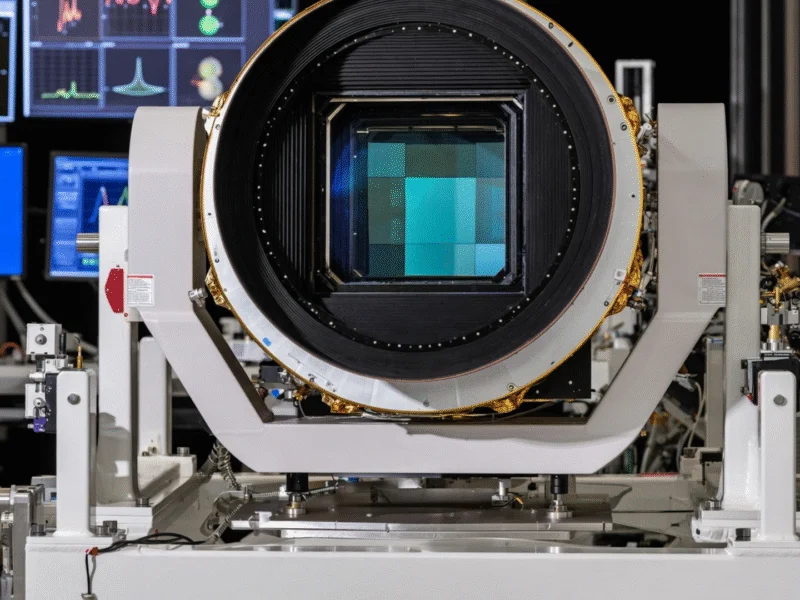Note: Featured image is for illustrative purposes only and does not represent any specific product, service, or entity mentioned in this article.
A Cosmic Anomaly: GRB 250702B Defies Conventional Understanding
In what astronomers are calling a paradigm-shifting discovery, follow-up observations from the James Webb Space Telescope have confirmed that GRB 250702B represents the most energetic cosmic explosion ever recorded in human history. This extraordinary event, initially detected by NASA’s Fermi telescope on July 2, 2025, has upended established theories about stellar deaths and gamma-ray burst mechanisms.
The significance of this finding cannot be overstated. While gamma-ray bursts typically last from milliseconds to several minutes, GRB 250702B exhibited unprecedented behavior by flaring continuously for an entire day. This prolonged activity challenges the fundamental premise that cosmic explosions are singular events. As researchers noted in their arXiv preprint paper, “Our observations have confirmed GRB 250702B to be a surprisingly distant event given the observed brightness of its host galaxy.”
Energy Calculations Reveal Record-Breaking Power
By leveraging Webb’s unparalleled observational capabilities, astronomers precisely calculated the distance to GRB 250702B, enabling accurate energy measurements. The results revealed an energy release substantial enough to strain, but not definitively break, canonical GRB collapsar models. This finding has sent ripples through the astrophysics community, prompting reevaluation of long-held assumptions about cosmic explosion limits.
The absence of a bright supernova counterpart presents another layer of mystery. While most long gamma-ray bursts accompany massive supernovae, researchers found no clear evidence of such an event, though they speculate a fainter supernova might be obscured by the host galaxy’s exceptional dust content. This aligns with broader industry developments in observational astronomy where unexpected findings often reveal new research directions.
Unusual Host Galaxy Adds Another Puzzle Piece
Perhaps equally surprising is the nature of the host galaxy. GRBs typically occur in small, young, star-forming galaxies, but GRB 250702B’s host is exceptionally large and dust-rich. The research team concluded that “the identification of such an exotic GRB in such an unusual galaxy raises the possibility that the environment was important in the progenitor channel.” This environmental factor may hold the key to understanding what makes this event so extraordinary.
The galaxy’s characteristics suggest we may need to reconsider the conditions that produce extreme cosmic events. This parallels how recent technology advancements often reveal unexpected complexities in systems we thought we understood.
Theoretical Explanations and Future Research Directions
Scientists currently speculate between two primary explanations for this unprecedented event: either an unusual form of stellar collapse or a black hole destroying a smaller star. Both scenarios would require modifications to existing astrophysical models to account for the extraordinary energy output and duration observed.
Future research will focus on several key areas:
- Searching for the hypothesized hidden supernova
- Long-term monitoring of the GRB’s afterglow
- Developing new theoretical models to explain the event
- Studying similar dusty, massive galaxies for comparable events
This comprehensive approach mirrors how related innovations in other scientific fields often require multidisciplinary investigation to fully understand breakthrough discoveries.
Broader Implications for Astrophysics and Beyond
The discovery of GRB 250702B demonstrates how much we still have to learn about the universe’s most violent phenomena. As with many market trends in technology and science, unexpected findings often drive the most significant advances in understanding.
This event also highlights the importance of continued investment in space observatories. The collaboration between Fermi’s initial detection and Webb’s detailed follow-up observations showcases how modern astronomy relies on complementary instruments. Similar to how recent technology security concerns require multiple layers of protection, understanding complex cosmic events demands multiple observational approaches.
As the scientific community digests these findings, the pressure mounts to develop new models that can account for such extraordinary events. The resolution to this mystery may well rewrite textbooks on stellar evolution and galaxy formation, much as significant discoveries in other fields—like those revealed in industry developments—can transform our understanding of complex systems.
GRB 250702B stands as a powerful reminder that the universe continues to surprise us, offering both challenges to our current understanding and opportunities for groundbreaking discoveries that push the boundaries of human knowledge.
This article aggregates information from publicly available sources. All trademarks and copyrights belong to their respective owners.



